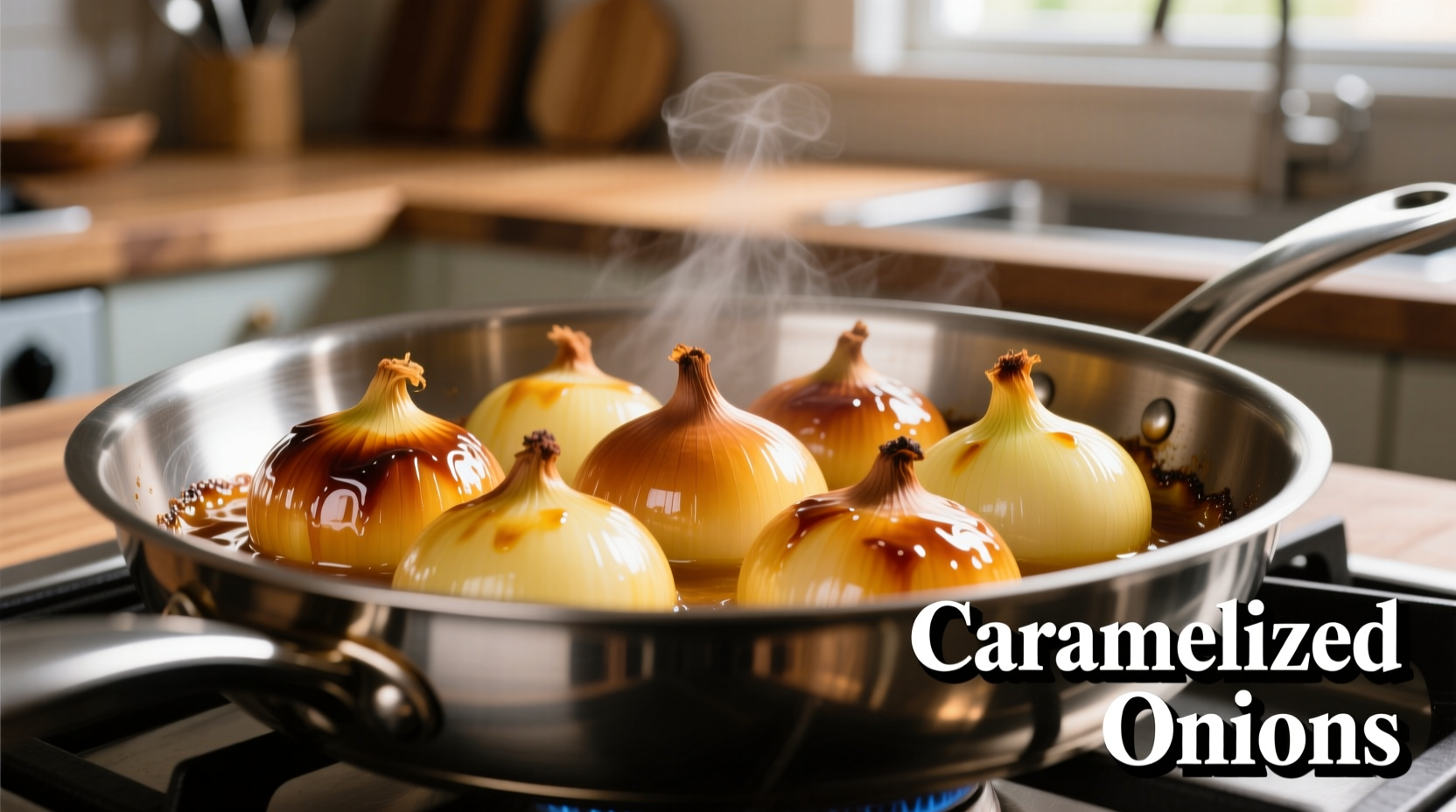The Science Behind Perfectly Caramelized Onions
Understanding why certain onions caramelize better requires examining the chemical process. Caramelization occurs when natural sugars break down at 320°F (160°C), while the Maillard reaction (140-165°C) creates savory compounds. The ideal caramelizing onion needs:
- 4-6% sugar content for sufficient browning
- Moderate moisture to prevent steaming
- Layered structure that breaks down evenly
- Neutral pH to support browning reactions
Yellow onions hit this sweet spot with their 4-5% sugar concentration and balanced water content. As noted in USDA agricultural research, their pyruvic acid levels (4-6 μmol/g) create that signature savory-sweet complexity without excessive pungency.
Onion Variety Comparison for Caramelizing
| Onion Type | Sugar Content | Cooking Time | Flavor Profile | Best For |
|---|---|---|---|---|
| Yellow Onions | 4-5% | 30-45 min | Rich umami, deep sweetness | French onion soup, sauces, toppings |
| Sweet Onions | 6-8% | 20-30 min | Mild, one-dimensional sweetness | Quick applications, raw finishing |
| Red Onions | 3-4% | 25-35 min | Sharp, slightly metallic | Color contrast in finished dishes |
| White Onions | 3-4% | 25-35 min | Clean, sharp bite | Mexican cuisine, salsas |
This comparison reflects data from the USDA Agricultural Research Service on allium varieties. While sweet onions like Vidalias contain more sugar, their higher water content (88% vs yellow's 86%) causes steaming rather than proper browning.
Professional Caramelization Technique
Follow this chef-tested method for perfect results every time:
- Prep properly: Slice yellow onions pole-to-pole (with the grain) for even cooking. Aim for 1/8-inch thickness using a mandoline.
- Control heat: Start with medium heat to soften onions, then reduce to medium-low for the browning phase. Never exceed 300°F (149°C).
- Manage moisture: Cook uncovered for the first 15 minutes to evaporate water, then cover for 10 minutes to soften, then uncover to caramelize.
- Patience pays: Rushing creates burnt spots rather than even browning. Proper caramelization takes 30-45 minutes.
Adding 1/4 teaspoon of baking soda (pH 9) can accelerate browning by creating alkaline conditions favorable for Maillard reactions, but use sparingly to avoid mushiness. This technique, documented in Modernist Cuisine, reduces cooking time by 25% while maintaining flavor complexity.

When to Choose Alternative Onions
While yellow onions are ideal for most applications, specific scenarios call for alternatives:
- Sweet onions work better when you need quicker results (under 30 minutes) or milder flavor for delicate dishes
- Red onions provide visual contrast in finished dishes like pizzas or flatbreads
- Shallots offer nuanced flavor in small-batch applications like steak toppings
Professional chefs at the Culinary Institute of America note that combining 75% yellow onions with 25% sweet onions creates optimal flavor depth with slightly faster cooking. This hybrid approach balances the rich umami of yellow onions with the quick caramelization of sweet varieties.
Practical Applications for Caramelized Onions
Maximize your perfectly caramelized onions with these chef-recommended uses:
- French onion soup foundation: Use exclusively yellow onions for authentic depth
- Burger enhancement: Mix with a touch of balsamic vinegar for gourmet topping
- Pasta sauce booster: Stir into tomato sauces for umami complexity
- Breakfast upgrade: Fold into omelets or frittatas with goat cheese
For best storage, cool caramelized onions completely before transferring to airtight containers. They'll keep for 5 days refrigerated or 3 months frozen. When reheating, add a splash of water or broth to restore moisture.











 浙公网安备
33010002000092号
浙公网安备
33010002000092号 浙B2-20120091-4
浙B2-20120091-4